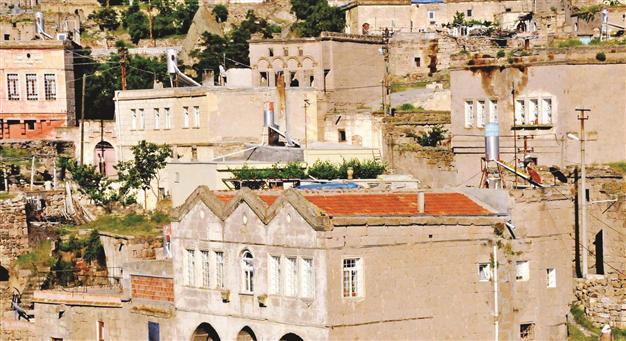Güzelyurt becomes a touristic hub
AKSARAY - Anatolia News Agency

Güzelyurt in Aksaray Province in the Central Anatolian region of Turkey, 250-year-old arched stone mansions have been transformed into boutique hotels serve tourists coming to discover the area’s historical treasures. Town is a part of the Cappadocia region. AA photos
In the town of Güzelyurt in Aksaray Province in the Central Anatolian region of Turkey, 250-year-old arched stone mansions have been transformed into boutique hotels to serve tourists coming to discover the area’s cultural and historical treasures. The town is an important part of the historical Cappadocia region.Mayor of Güzelyurt, Kudret Özeş, said Güzelyurt and the surrounding area have throughout its history hosted many cultures like the Hittites, Persians, Greeks, Romans, Byzantines, Seljuks and Ottomans. The town has previously been known under the names Karballa and Gelveri. According to Özeş, Güzelyurt is a treasure waiting to be discovered.
“In Güzelyurt history, nature and culture awaits adventurers with [places like the] Ihlara Valley, the Monastery Valley, Selime Monastery Cathedral, underground cities, hundreds of Gelveri houses and fairy chimneys waiting to be explored.
The founder of the Orthodox sect behind St. Gregorius Church was born in Güzelyurt, Özeş said, adding that Greeks living in the area during the Seljuk and Ottoman era invested their wealth in Güzelyurt and made it a significant religious center. “The venue became one of the regional trade centers with this,” he said.
 Population exchange in 1920
Population exchange in 1920 Much of the previously large Greek population in Güzelyurt vanished with the population exchange of the 1920s. “With the population exchange in 1924, Greeks and Turks exchanged places. Before the population exchange, rich Greeks dealing with trade in Istanbul had historical mansions in Güzelyurt,” Özeş said.
Some houses in the town date back 250 years and a few 100-year-old historical houses also exist, according to Özeş. “They have extremely thick walls. The height of the arches is nearly four to five meters. Each of the houses is a work of art creating an authentic environment.”
Özeş said the historical mansions are now being used to meet the needs of visitors to the region. “The authentic structure of the buildings is protected,” he said.
“With the arched stone mansions’ being brought into use in tourism we’ve reached the capacity of 400 beds. We have boutique hotels and guest houses. The nature [in Güzelyurt] and tourism go hand in hand,” Özeş said.
The restoration of the old houses is still in progress, he said.
Increasing potential of tourism
“We do our best as a municipality. We are open to new ideas from the tourism companies about the transformation of the historical mansions into boutique hotels. With this aim, we’ve allocated old houses belonging to our municipality to tourism managers,” Özeş said. The value of the houses has risen drastically as foreign investors become increasingly interested in them and travel to the area to see them, Özeş said. “The citizens are content with the situation too. Some citizens transformed their houses into boutique hotels with a series of restorations.” Özeş said the town’s tourism potential continues to increase which benefits the town economically. “The prices of the mansions are increasing day by day. Values of the old houses, which [have been maintained] well, range from 250 to 300 thousand Turkish Liras. There are old arched houses with eight to 10 rooms waiting to be sold,” he said.
Özeş also noted that with the increasing number of beds available to tourists the number of the tourists has increased too and many tourists wish to stay at the town’s historical mansions.
















